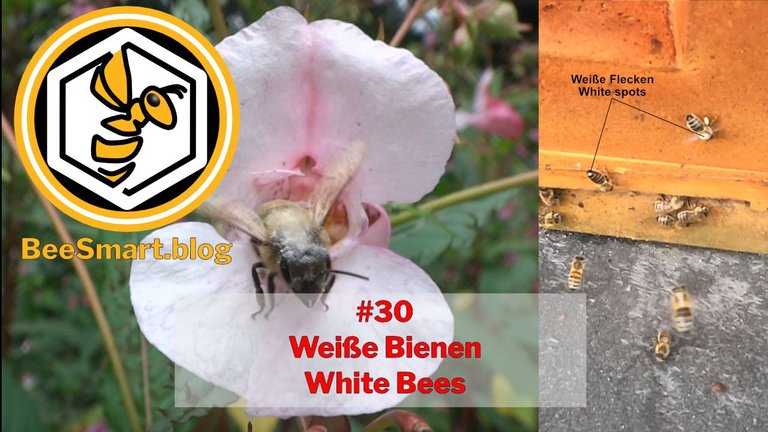
Deutsch
Weiße Bienen
Wie in jedem Jahr, bekomme ich auch in diesem Jahr, im August Anrufe von besorgten Personen und Jungimker, dass etwas mit den Bienen nicht stimmt oder dass diese krank sind. Meist hört man:
„Ich sehe viele weiße Bienen!“
oder
„Meine Bienen haben weiße große Flecken auf dem Rücken oder am Hinterteil“
Und beim Blick scheint das auch zu stimmen.
English
White Bees
This year, as every year, I get calls from concerned people and young beekeepers in August that something is wrong with the bees or that they are sick. Most often you hear:
"I see lots of white bees!"
or
"My bees have white big spots on their backs or rumps".
And when you look, it seems to be true.
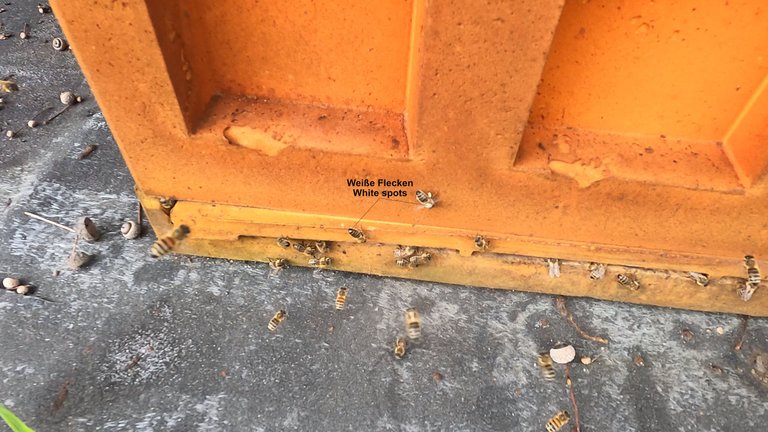
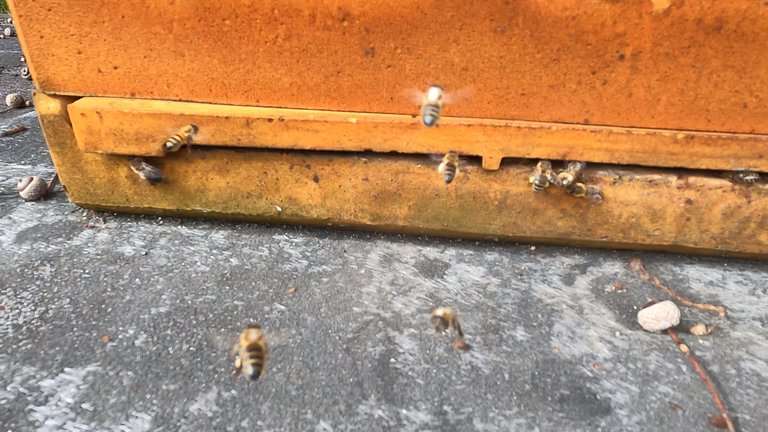

Zusammenfassend: Keine Gefahr, keine Krankheit und Problem. Nur die Natur in ihrem jährlichen Verlauf. Bis zum nächsten Jahr, wenn ich wieder zum August besorgte Anrufe bekomme😉
Vielleicht noch ein Hinweis:
Das Drüsige Springkraut ist ein invasiver Neophyt - sprich: nicht von hier. Die nichtheimische Pflanze breitet sich zurzeit sehr schnell aus und verdrängt einheimischen Pflanzen. Auch wenn sie sehr schön blühen, sollte man sie nicht im eigenen Garten anpflanzen.
Apart from the fact that the bees are white, their behaviour is completely normal. And the solution is also simple. The girls were in the jumpweed (glandulifera lat. Impatiens glandulifera), which usually grows in abundance along streams and rivers in August. The white spots are high concentrations of pollen that the bees scrape off with their backs when they crawl into the cup-like flowers to get at the plant's nectar. The pollen of the plant is also very popular with the bees.
In summary: No danger, no disease and problem. Just nature in its annual course. Until next year, when I get worried calls again about August😉.
Perhaps one more note:
Bunchweed is an invasive neophyte - means: not locally. The non-native plant is currently spreading very quickly and displacing native plants. Even if they flower very beautifully, you should not plant them in your own garden.
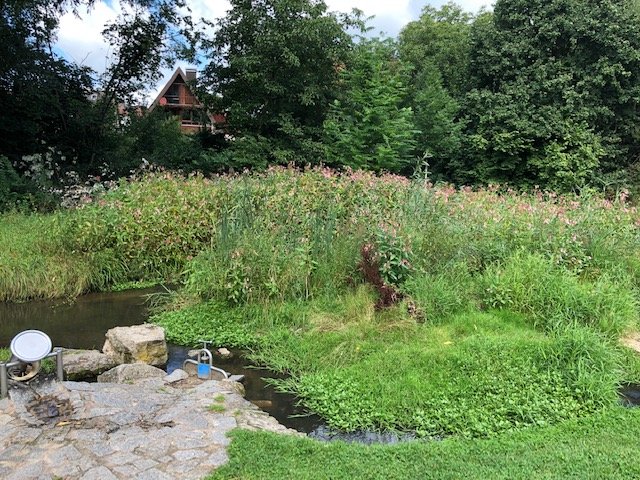
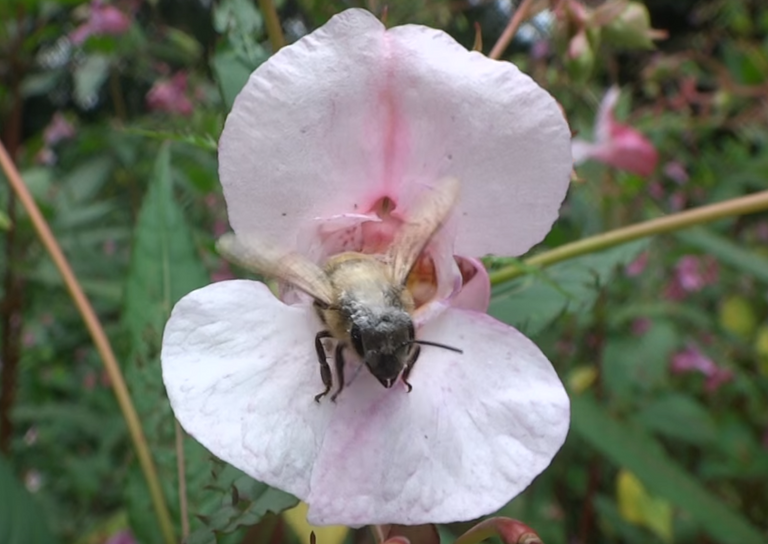
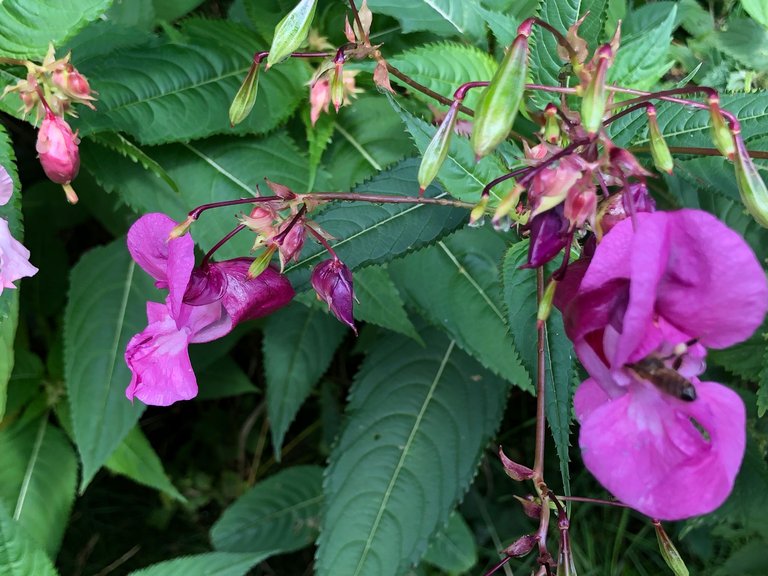
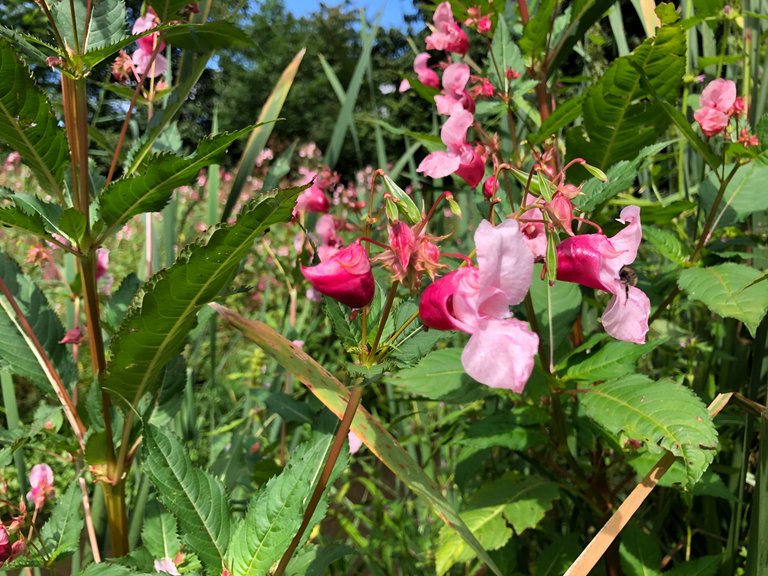
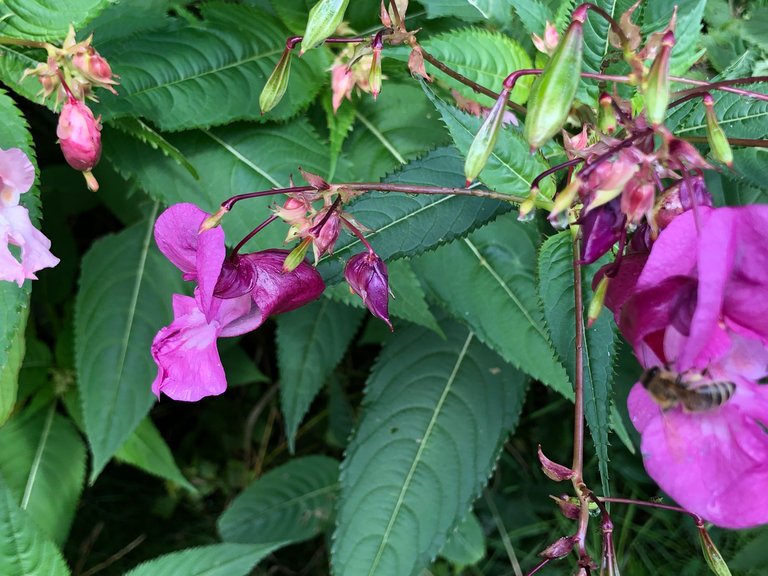
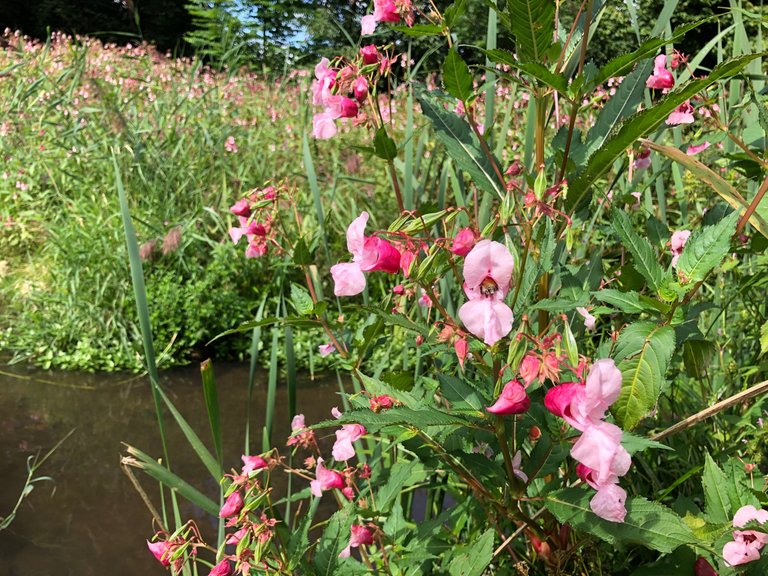
Witzig, ich schreib auch grad an einem post, wo (unter anderem) das drüsige Springkraut vorkommt. Ich werd Deinen zitieren :)
Danke
Bin schon gespannt auf deinen Post.
Hallo. Danke für deine Aufklärung😊so wird man schlauer 😊
Danke - gern geschehen
Eines meiner Ziele mit meinem Blog😇
Echt toll erklärt.
Congratulations @beesmartblog! You have completed the following achievement on the Hive blockchain and have been rewarded with new badge(s) :
Your next target is to reach 150 posts.
You can view your badges on your board and compare yourself to others in the Ranking
If you no longer want to receive notifications, reply to this comment with the word
STOPTo support your work, I also upvoted your post!
Check out the last post from @hivebuzz: